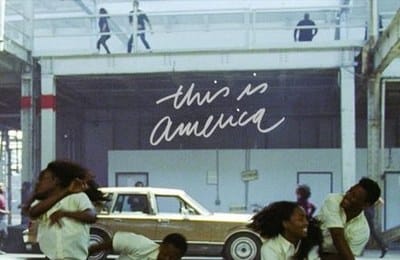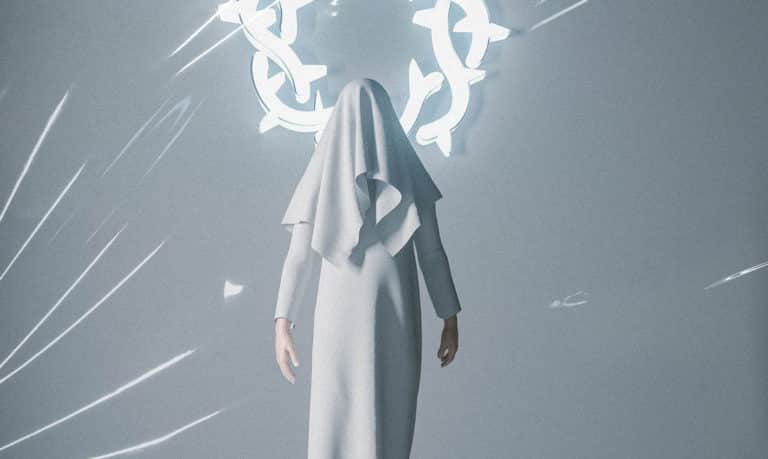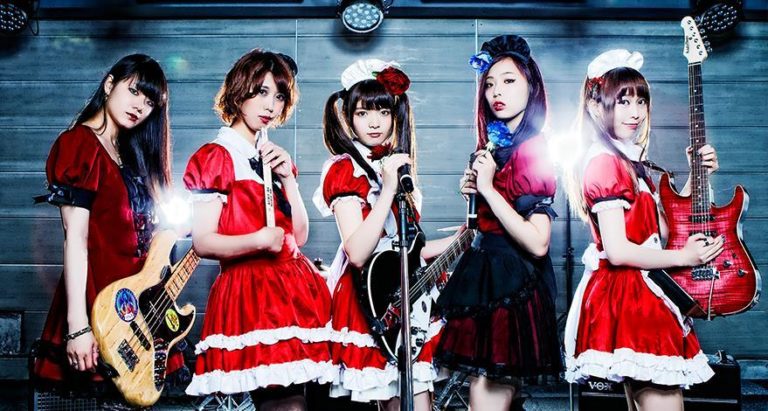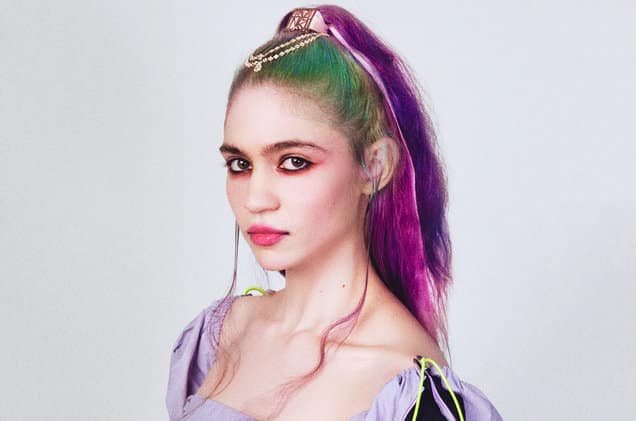This is America – An Analysis
On Saturday night, Donald Glover aka Childish Gambino released a new track and an accompanying music video. The song is called “This is America”, and it’s the song of the year, so far. If it hasn’t reached you yet, your ear’s not to the ground.
Take a few minutes to watch the video.
I love this video. It’s mainstream, it’s deep, it’s thoughtful, it’s allegorical and it’s emotional. Donald Glover is an amazing artist and one of the greatest Americans my generation has offered up to the world. This is one of those things where a lot of people’s initial reaction is going to be “What the fuck did I just watch?”
Well, I’ve watched this video about a hundred times, and this is what I do. Let’s talk about it.
First, the surface level things.
There’s an obvious commentary on gun violence, with the guns being taken away like religious artifacts while bodies are roughly dragged away.
There’s an obvious commentary on the bread and circuses of American life — while the population is distracted by joyful dancing, chaos spreads in the background, both literally and figuratively.
But it doesn’t stop there. Let’s look a little deeper.
1. The Conflicted Soul
To me, Donald Glover’s character in the video represents a deeply conflicted soul. He swings back and forth between joy, dispassionate violence and melancholy. When the video starts, he wakes up to the hymnal sounds of the chorus and, choking back expressions of sadness, anger and pain he walks toward the source of the music, trying to’switch on’ the feeling of enjoyment, only to turn on a dime and shoot the old musician, now in an execution hood, in the head.
The lyrics at the start are telling, and they set up the narrative of the video: “I just wanna party” — both a criticism of a society that wants to party and ignore the chaos, as well as a cry for help: “I just wanna party [but I can’t]”. Both readings overlay the entire video and set up its complexity. A lot of people are focused on the first potential reading here: everyone wants to party and the issues are swept under the rug. I felt the emotion of the second a lot more strongly.
The lyrics expressed following this section are: Guns in my area / I got the strap / I gotta carry ’em. This expresses a sense of obligation. “I gotta carry ’em,” he says, as he repeatedly looks back to the kids he’s dancing with. Not, “I get to carry ’em.”
When he walks into the gospel setting, his instinct is to enjoy the music, but something triggers him — perhaps the lyrical goading of ‘get your money, black man’, and he turns on a dime and murders them all, walking off in stoicism until he’s joined once again by his backup dancers. The emotionless of the violence, followed by an immediate mood change to happiness, comes off as disassociation. Following that disassociative moment, his melancholy captures him again and he momentarily returns to the catatonic, opiated state from the beginning of the song before he sighs and lights up a joint.
To me, Glover’s character is an allegory for the black community that can be read two ways. It projects two mindsets pulling at each other — ‘we just wanna party’ and have a good life, but look at how impossible that seems with the chaos around us; as well as ‘we just wanna party’ so we’re ignoring all these things.
Boiled down, these two readings represent a fundamental theme of conflict within the heart of the character and, allegorically, within the black community. “Forgive and move on” or “Remember”. This is curiously illustrated by the exaggerated stance Glover’s character makes before committing his first murder, which references two distinct cultural moments.
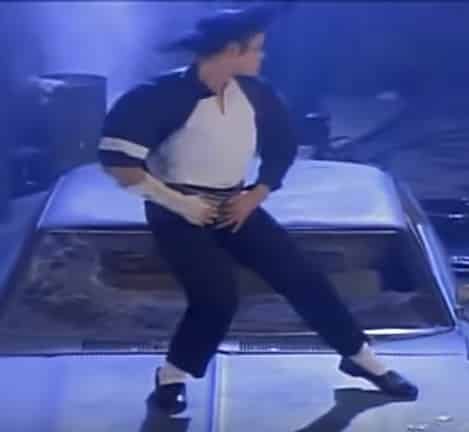
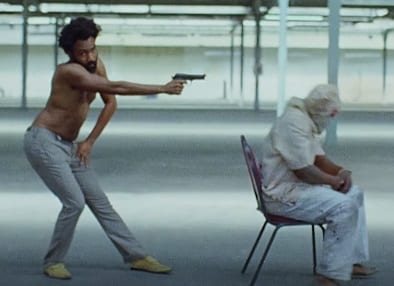
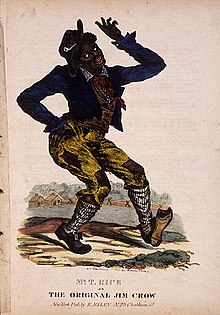
The pose Michael Jackson made at the end of his famous dance sequence in “Black or White”, after quite literally ‘smashing’ racism, and the racist Jim Crow pose made in the south, caricaturing black Americans.
2. Black on Black Violence
It’s notable that there are only black people in the song. We can infer that whatever the commentary is, it’s reflective of internal struggle within the black community. One thing that’s highly prominent throughout the video is black on black violence.
Both of the significant shootings that Glover’s character engages in are upon innocent men and women who are, not only innocent, but musicians from very important eras of music in terms of the history of black culture in America. He shoots a blues guitarist, and then a gospel choir.
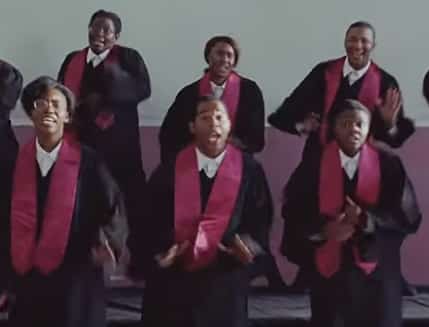
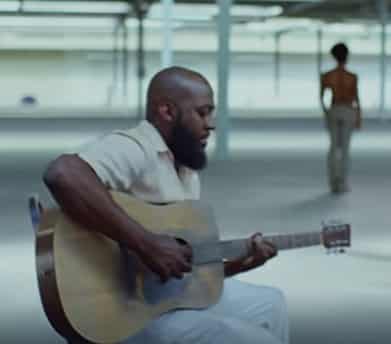
There’s the surface level reading, which is no less accurate or important because it’s upfront, that violence within the black community is causing even more pain than necessary, that spiritual turmoil is causing the community to act out in unproductive and self-damaging ways. There’s something else to be said about this as well, which is that after each murder of a historically black musician, the beat abruptly darkens to the hiphop chorus and the imagery of what most would consider happy, positive representations of black history, is replaced by modern music and modern dancing. So there’s a dual suggestion: the black community is committing physical crime against itself, but also cultural crimes.
The lyrics following the execution of the choir reflect this reading as well, talking about being Gucci and being pretty as if, contextually, that popular shallowness could ever matter in the face of the slaughter of a choir, or metaphorically that those shallow lyrics could ever enrich the soul the way that the recently slaughtered choral music could.
3. Protecting the Younger Generation
There’s something else I noticed in the video, which is that Glover’s character, semi-psychotic, showing symptoms of, essentially, PTSD, struggles to smile at the beginning, before anyone arrives, or at the end, once everyone has left. Only in the scenes where the children arrive to dance behind him does he immediately, without hesitation, put on a bright and convincing, but ultimately hollow, smile. This man, who’s extremely fractured, is kind and encouraging to these kids in every moment they share.
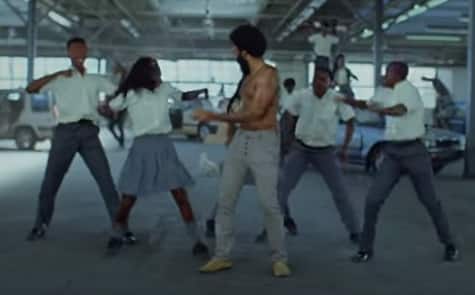
A lot of people are reading the foreground joy and the background chaos as a referendum on society ignoring problems, but I see another way to view this as well. Not that it discounts the first reading, it certainly does not, as with art, multiple things can be true at once. I view this as the character trying to shield the children from the chaos that surrounds them, to have them focus on dancing and the music, rather than the chaos.
Glover’s SNL performance of the song heightened my confidence that this component of that artistic choice is intentionally embedded — the SNL performance focuses on the children and, ultimately, Glover leaves the stage, and the young girl dancing takes the spotlight and closes out the show.
There is definitely a generational element to the song, juxtaposing the innocence of the children, not necessarily ignoring the chaos, but oblivious to it, with the violence of the real world. As the whole song is presented with a mood of melancholic resignation, it seems to me there’s a strong message which says “these kids are not part of the riot now — but the riot surrounds them.”
4. Get Your Money, Black Man
The meat of the video is bookended by two Michael Jackson poses, both taken from the same video. As I mentioned above, the pose Glover’s character makes during his first murder is reminiscent of both Michael Jackson’s pose at the end of “Black or White”, as well as the Jim Crow pose.
At the end of the video, before the coda, he dances on a car, just as Jackson does in “Black or White”.

At the end of this segment, as the camera pans out, Glover’s character ends the dance with a very clear Michael Jackson pose and head snap, then holds the pose. The rest of the mise-en-place of this scene is this:
– The community is destroyed and gone
– The guitarist is fitted with an execution hood
– SZA staring eerily at the camera
The attitude of Glover’s dance is catharsis, and the lyric that plays over this section is “Get Your Money, Black Man,” the same line that instigated him to gun down the church choir earlier in the video. I believe the song is making an overall statement about how this bad advice has led to this outcome.
Glover’s character is enjoying a piece of historically black culture — the choir — until they bring up this other, inextricably linked component — “Get Your Money”, and he guns them down, throwing the baby out with the bathwater. Then, at the end, he dances on the car to the music of a man clothed in the imagery of death and imprisonment, utilizing a dance that, earlier in the video, was conflated with the imagery of Jim Crow, while SZA looks not at the performance, but to the audience, as if to judge it for watching. The camera pans out, as if the audience has lost interest now that the violence is over, and the emergency lights of the car subtly turn on.
Outside of the racial implications, since, as I mentioned before, this video contains an entirely black cast and seems to represent a commentary about the black experience to America at large, I believe these segments illustrate the mental damage that the pursuit of money causes. This reading is backed up by the lyrics that immediately follow:
“You just a Black man in this world
Drivin’ expensive foreigns, ayy
You just a big dawg, yeah
I kenneled him in the backyard
No probably ain’t life to a dog
For a big dog”
The assertion of this stanza being, essentially, “Yeah, you’re a big dog, but you’re still a dog, you’re still in a kennel, and that’s not the best life for a dog; even a small dog is living better, if it’s free.”
6. The Ending
I want to end with a short reading, because the ending is very ambiguous and I think can be read in a number of different ways. It’s hard to make out definitively if the people behind him are white or black, or if they’re chasing him or running away as well, because it’s so out of focus, but it seemed to me they were all running away, because they weren’t converging on him. If I’m being honest with myself, I think it might be intentionally unclear who is chasing him (black or white?) or if they’re fleeing as well.
The way that I personally read the ending is that Glover’s character is running away from the whole situation. That things are so incomprehensibly fucked up that all you can do is run in terror from it all.
I encourage everyone to watch this video and give some deep thought to it. I believe it’s important when something like this comes out. With our country so divided… hate has solved nothing. Quick reactions have solved nothing. Back-patting and getting shots in and twisting things to fit our own points of view has solved nothing. It’s time to listen to each other, and take some time, and think things through.
At the most basic, most obvious level, you can feel something visceral from this video, like when someone breaks down in a room and the air gets sucked out and they say something that just needs to be said. You can tell what’s worth listening to through all the screams of the crowd, and this is one of those things.

